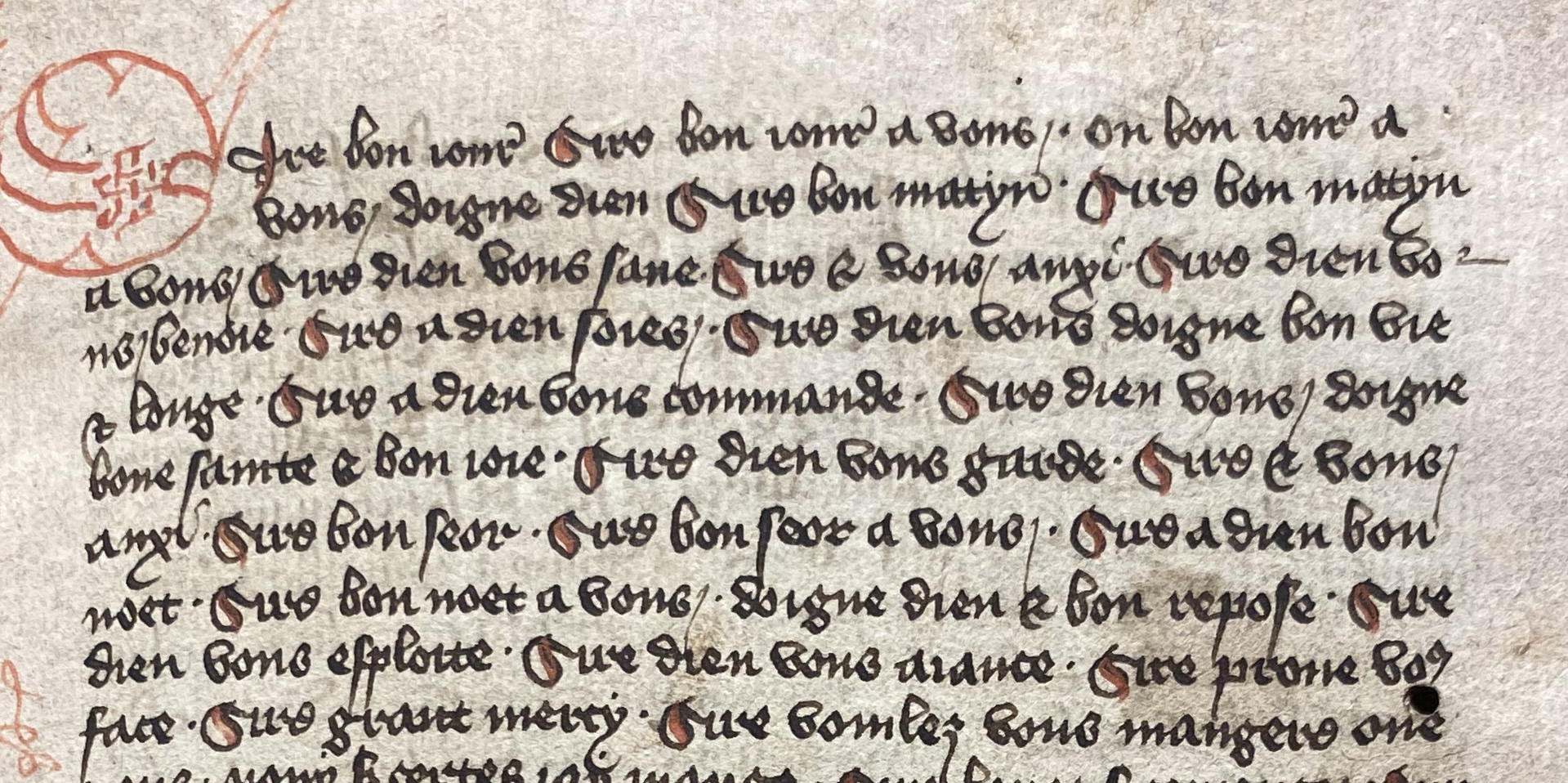
‘Learning Anglo-French’ is made up of two work packages, the first of which, ‘Gathering the Evidence’, will inform the second, ‘Analysing the Evidence’.
The first strand of the project looks at the sources for French lanuguage-learning in medieval Britain: how to collate and display them, and how to represent their textual and paratextual features.
The two standard resources for identifying material relating to French-teaching material in medieval England both date from the 1990s: Ruth Dean and Maureen Boulton’s general Anglo-Norman Literature: A Guide to Texts and Manuscripts (1999; now out of print) and Andres Kristol’s article, ‘L’enseignement du français en Angleterre (XIIIe–XVe siècles) : les sources manuscrites’ (1990). With new manuscript witnesses emerging in the intervening decades, and with developments in digital technologies (particularly XML) allowing for increasingly-interactive and responsive methods for finding and classifying texts and manuscripts, the time is ripe for a revised and updated catalogue that brings together over 70 manuscripts and 20 texts, some of which have never previously been edited. This strand of the project builds on the pioneering editorial work of the ‘Learning French in Medieval England’ project, drawing on its editorial methodologies to integrate new texts.
Alongside the database, ‘Learning Anglo-French’ will also produce a mapping tool, built on GIS technologies, that will visualise the origin and provenance of specific texts and manuscripts.
The second strand of the project looks at the methods for analysing the sources identified in the first strand. We are using multiple overlapping approaches, combining traditional codicological and textual scholarship with cutting-edge quantitative analysis.
Traditional palaeographical, textual and paratextual analysis is a core part of the project’s approach. Many of the texts that the project has identified have only recently begun to be explored in depth, and fundamental questions about their composition, construction, and manuscript history remain unanswered. Each of the 50+ manuscripts in our corpus tells its own story of how, where and why French was taught, and close study of their contents will bring new insights into these narratives.
Biocodicology is a new approach to the study of manuscripts which examines the biological
information stored in parchment documents, whether endogenous (from the animal that provided the parchment) or exogenous (left from previous users). This data holds enormous potential for confirming, nuancing, or challenging commonplace assumptions about the origins of our manuscript sources, who used them, and who interacted with them in the following centuries.
From 2026, the project will host three Visiting Fellows. These fellows, who include experts in contemporary linguistics (Prof. Richard Ingham) and quantitative codicology (Dr. Krista Milne) will bring their own distinct areas of expertise to the documents in our project corpus.
The latter stages of the project will see several collaborative workshops held in Exeter, bringing together specialists across Anglo-French, biocodicology, the history of education, and manuscript studies. These workshops will contribute to several key outputs from the project, as well as providing specialists with the opportunity to test early versions of the project database.
Feature image: ‘Sire, bon jour …’ Opening dialogues from the Liber Donati, in Oxford, Bodleian Library, MS lat. misc. e. 93, fol. 1r (15th century).